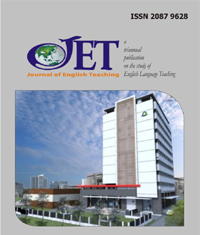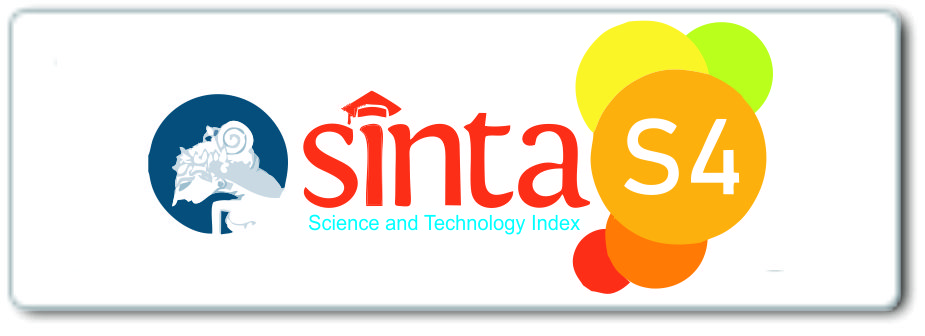Analyzing Students' Learning Styles in Listening Comprehension
DOI:
https://doi.org/10.33541/jet.v10i3.6181Keywords:
English language education, learning styles, listening comprehensionAbstract
This study investigates the impact of diverse learning styles on listening comprehension abilities among English education students in a university in Bandung, Indonesia. Utilizing a descriptive qualitative research design, the research involved 10 participants who underwent learning style tests, with in-depth interviews conducted on three selected participants. The findings revealed a spectrum of learning styles. Interviews provided valuable insights into the strategies employed by each learning style, such as visual learners favoring videos and seeking additional explanations online. Auditory learners preferred expert explanations and quiet study environments, while kinesthetic learners utilized movement during group discussions. Classroom observations demonstrated the effectiveness of tailored strategies, incorporating visual aids, auditory elements, and hands-on activities to create an inclusive learning space. The result underscored the significance of multimodal approaches for maximizing student engagement and comprehension. It is recommended for educators to recognize diverse learning styles, employ flexible instructional methods, and foster inclusive learning environments. Hence, the research reinforces the notion that educators should recognize the presence of various learning styles, actively adopt adaptable teaching approaches, and foster inclusive learning environments, thus optimizing student involvement and understanding.
References
Amaniyan, S., Pouyesh, V., Bashiri, Y., Snelgrove, S., & Vaismoradi, M. (2020). Comparison of the conceptual map and traditional lecture methods on students’ learning based on the VARK learning style model: a randomized controlled trial. SAGE Open Nursing. https://doi.org/10.1177/2377960820940550
An, W. (2022). You said, they said: A framework on informant accuracy with application to studying self-reports and peer-reports. Social Networks, 70, 187-197.
Bortfeld, H. (2019). Functional near‐infrared spectroscopy as a tool for assessing speech and spoken language processing in pediatric and adult cochlear implant users. Developmental psychobiology, 61(3), 430-443.
Bouchey, B., Castek, J., & Thygeson, J. (2021). Multimodal learning. Innovative Learning Environments in STEM Higher Education: Opportunities, Challenges, and Looking Forward, 35-54.
Burmark, L. (2002). Visual literacy: Learn to see, see to learn. Association for Supervision and Curriculum Development.
Chevalier, A., Isphording, I. E., & Lisauskaite, E. (2020). Peer diversity, college performance, and educational choices. Labour Economics, 64, 101833.
Daoruang, B., Mingkhwan, A., & Sanrach, C. (2020). The Learning Material Classified Model Using VARK Learning Style. In The Impact of the 4th Industrial Revolution on Engineering Education: Proceedings of the 22nd International Conference on Interactive Collaborative Learning (ICL2019)–Volume 2 22 (pp. 505-513). Springer International Publishing.
Ferreira, M., Martinsone, B., & Talić, S. (2020). Promoting sustainable social-emotional learning at school through a relationship-centered learning environment, teaching methods, and formative assessment. Journal of Teacher Education for Sustainability, 22(1), 21-36.
Föcker, J., Atkins, P., Vantzos, F.-C., Wilhelm, M., Schenk, T., & Meyerhoff, H. S. (2022). Exploring the effectiveness of auditory, visual, and audio-visual sensory cues in a multiple object tracking environment. Attention, Perception, & Psychophysics, 84(5), 1611–1624. https://doi.org/10.3758/s13414-022-02492-5
Hodson, D. (1998). Teaching and learning science: Towards a personalized approach. McGraw-Hill Education (UK).
Ismail, S. M., & Haniff, W. A. A. W. (2020). Education 4.0: The effectiveness of VARK learning style towards actualising industrial revolution 4.0. J. Educ. Soc. Res, 10(3), 52.
Kagerer, F. A., & Clark, J. E. (2015). Development of kinesthetic-motor and auditory-motor representations in school-aged children. Experimental Brain Research, 233(7), 2181–2194. https://doi.org/10.1007/s00221-015-4288-7
Kurita, & Ahmadi. (2016). Improving students’ listening comprehension using cloze dictation technique. (M. W. Saputra, Ed.) Makassar.
Leasa, M., Corebima, A. D., & bosluk, I. (2017). Emotional intelligence among auditory, reading, and kinesthetic learning styles of elementary school students in Ambon-indonesia. International Electronic Journal of Elementary Education, 10(1), 83–91. https://doi.org/10.26822/iejee.2017131889
Mozaffari, H. R., Janatolmakan, M., Sharifi. R., Ghandinejad, F., Andayeshgar, B., & Khatony, A. (2020). The relationship between the VARK learning styles and academic achievement in dental students, Advances in Medical Education and Practice.15-19. DOI: 10.2147/AMEP.S235002.
Nagaraj, N. K. (2021). Effect of auditory distraction on working memory, attention switching, and listening comprehension. Audiology Research, 11(2), 227–243. https://doi.org/10.3390/audiolres11020021
Pardede, P. (2019). Integrated skills approach in EFL classrooms: A literature review. In: PROCEEDING English Education Department Collegiate Forum (EED CF) 2015-2018. Jakarta: UKI Press, 147-159
Rost , Hamouda , G., & Subouri. (2016). Improving students’ listening comprehension using cloze dictation technique. Makassar. Retrieved Oktober 15, 2023, from https://digilibadmin.unismuh.ac.id/upload/759-Full_Text.pdf
Tarigan. (1994). Listening to poetry has not been well done among students in Surakarta. p. 28. Retrieved Oktober 15, 2023
Torrington, J., & Bower, M. (2021). Teacher‐created video instruction in the elementary classroom—Its impact on students and teachers. Journal of Computer Assisted Learning, 37(4), 1107-1126.
Truong, H. M. (2016). Integrating learning styles and adaptive e-learning system: Current developments, problems, and opportunities. Computers in human behavior, 55, 1185-1193.
Wei, L. (2018). Translanguaging as a practical theory of language. Applied linguistics, 39(1), 9-30.
Downloads
Published
Issue
Section
License
Copyrights for articles published in JET are retained by the authors, with first publication rights granted to the journal. The journal/publisher is not responsible for subsequent uses of the work. It is the author's responsibility to bring an infringement action if so desired by the author.





